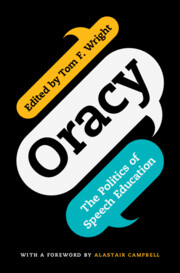Refine search
Actions for selected content:
666 results
Chapter 7 - Deficiency Policy
-
- Book:
- A New Theory of Sufficientarian Justice
- Published online:
- 12 December 2025
- Print publication:
- 29 January 2026, pp 181-208
-
- Chapter
- Export citation
Chapter 1 - Suicide Is a Global Problem
- from Section 1 - Suicide as a Public Health Problem
-
-
- Book:
- Preventing Suicide
- Published online:
- 18 December 2025
- Print publication:
- 22 January 2026, pp 3-14
-
- Chapter
- Export citation
2 - Corporate Governance and State
- from Part I - Theory and Framework
-
- Book:
- Incentive Bargaining and Corporate Governance
- Published online:
- 12 December 2025
- Print publication:
- 08 January 2026, pp 43-86
-
- Chapter
- Export citation
Chapter 7 - Theoretical Drift
-
- Book:
- Island Time
- Published online:
- 05 December 2025
- Print publication:
- 08 January 2026, pp 154-173
-
- Chapter
- Export citation
11 - Law-Making and Incentive Bargaining
- from Part V - Legislative Policies
-
- Book:
- Incentive Bargaining and Corporate Governance
- Published online:
- 12 December 2025
- Print publication:
- 08 January 2026, pp 321-346
-
- Chapter
- Export citation
5 - Policy and Conclusions
-
- Book:
- US Business Cycles 1954–2020
- Published online:
- 22 December 2025
- Print publication:
- 18 December 2025, pp 106-128
-
- Chapter
- Export citation
Representing Black and White: The Role of Candidate Issue Priorities in Perceptions of Representation
-
- Journal:
- Journal of Race, Ethnicity and Politics , First View
- Published online by Cambridge University Press:
- 18 December 2025, pp. 1-20
-
- Article
-
- You have access
- Open access
- HTML
- Export citation
Mental health legislation in the Middle East: current frameworks, gaps and pathways for reform
-
- Journal:
- BJPsych International , FirstView
- Published online by Cambridge University Press:
- 17 December 2025, pp. 1-5
-
- Article
-
- You have access
- Open access
- HTML
- Export citation
Understanding biosafety practitioner perspectives
-
- Journal:
- Politics and the Life Sciences , First View
- Published online by Cambridge University Press:
- 10 December 2025, pp. 1-24
-
- Article
-
- You have access
- Open access
- HTML
- Export citation
‘It wasn’t the fire. It was the state’: the role of relational listening in state and institutional accountability
-
- Journal:
- International Journal of Law in Context / Volume 21 / Issue 4 / December 2025
- Published online by Cambridge University Press:
- 02 December 2025, pp. 659-672
-
- Article
-
- You have access
- Open access
- HTML
- Export citation
Effects of carbon policies on disadvantaged forest communities in the United States
-
- Journal:
- Agricultural and Resource Economics Review , First View
- Published online by Cambridge University Press:
- 17 November 2025, pp. 1-29
-
- Article
-
- You have access
- Open access
- HTML
- Export citation
1 - Law’s Imperfect Governance
- from Part I - Discontent with Law’s Governance
-
-
- Book:
- The Cambridge Handbook of the Governance of Technology
- Published online:
- 30 October 2025
- Print publication:
- 13 November 2025, pp 3-21
-
- Chapter
- Export citation
YouthView: a platform for interactive visualizations to explore youth disadvantage
- Part of
-
- Journal:
- Data & Policy / Volume 7 / 2025
- Published online by Cambridge University Press:
- 13 October 2025, e69
-
- Article
-
- You have access
- Open access
- HTML
- Export citation
15 - One Health and Multispecies Urban Infrastructure
- from Part III - One Health and Future Legal Structures
-
-
- Book:
- The Cambridge Handbook of One Health and the Law
- Published online:
- 25 September 2025
- Print publication:
- 09 October 2025, pp 230-243
-
- Chapter
- Export citation

The Cambridge Handbook of One Health and the Law
- Existing Frameworks, Intersections and Future Pathways
-
- Published online:
- 25 September 2025
- Print publication:
- 09 October 2025
Chapter 2 - Understanding the education landscape
- from Part II - Professional knowledge
-
-
- Book:
- Learning to Teach in a New Era
- Published online:
- 04 October 2025
- Print publication:
- 25 September 2025, pp 40-74
-
- Chapter
- Export citation

Oracy
- The Politics of Speech Education
-
- Published online:
- 23 September 2025
- Print publication:
- 31 July 2025
Perceptions of non-sugar sweeteners and front-of-package labels among parents of preschool and school-aged children in Brazil
-
- Journal:
- Public Health Nutrition / Volume 28 / Issue 1 / 2025
- Published online by Cambridge University Press:
- 19 September 2025, e170
-
- Article
-
- You have access
- Open access
- HTML
- Export citation
Can we learn from the UK’s guerrilla rewilding movement?
-
- Journal:
- Oryx , First View
- Published online by Cambridge University Press:
- 16 September 2025, pp. 1-11
-
- Article
-
- You have access
- Open access
- HTML
- Export citation
University commitments to a sustainable food system: a content analysis of UK higher education institutions food sustainability policies
-
- Journal:
- Public Health Nutrition / Volume 28 / Issue 1 / 2025
- Published online by Cambridge University Press:
- 11 September 2025, e163
-
- Article
-
- You have access
- Open access
- HTML
- Export citation
